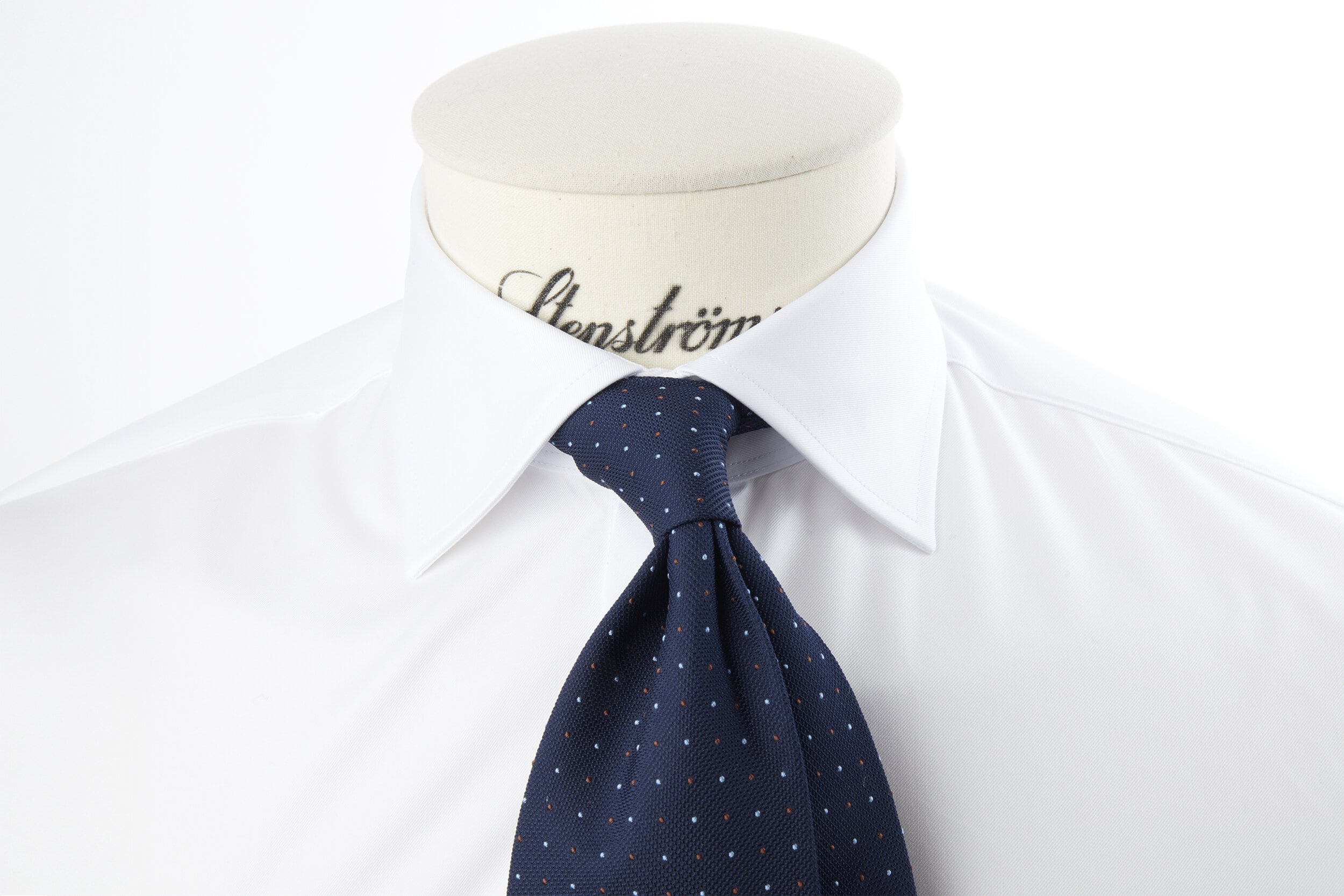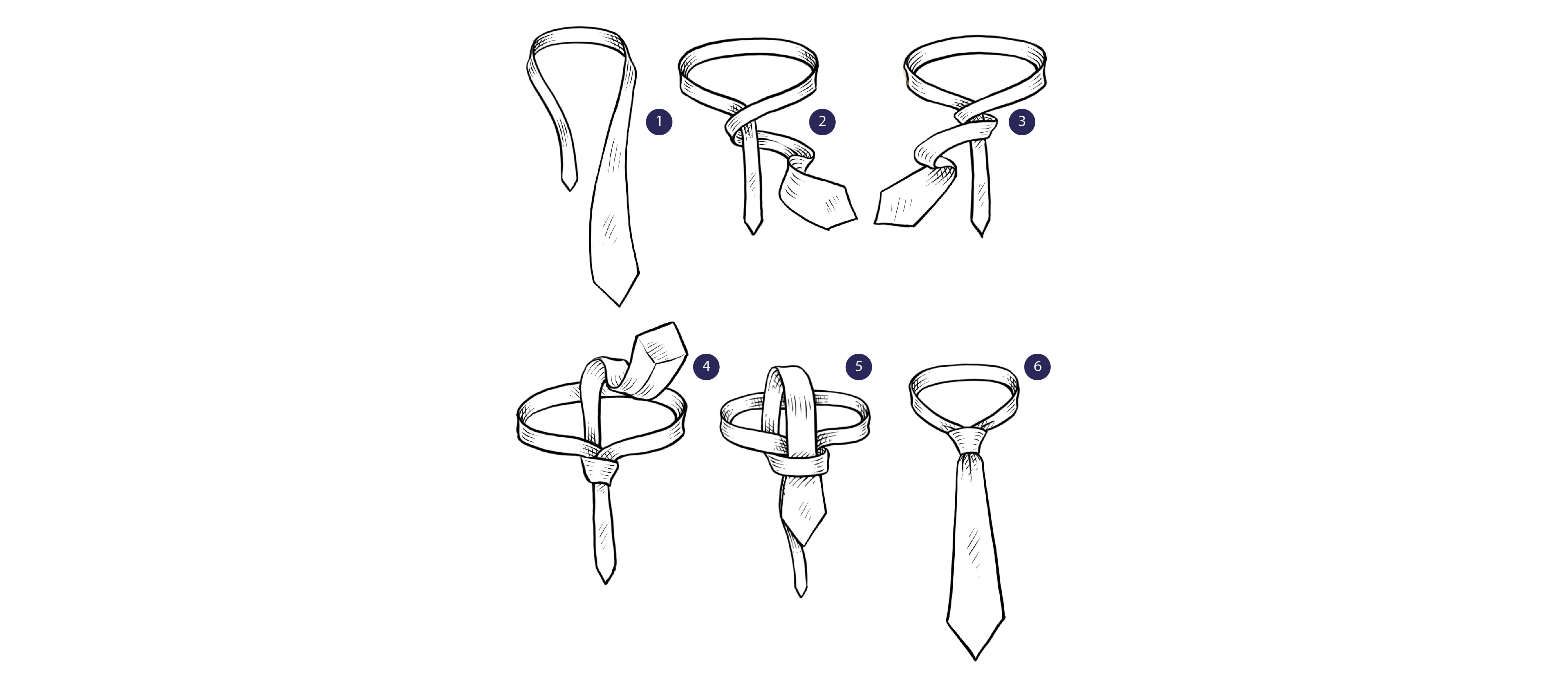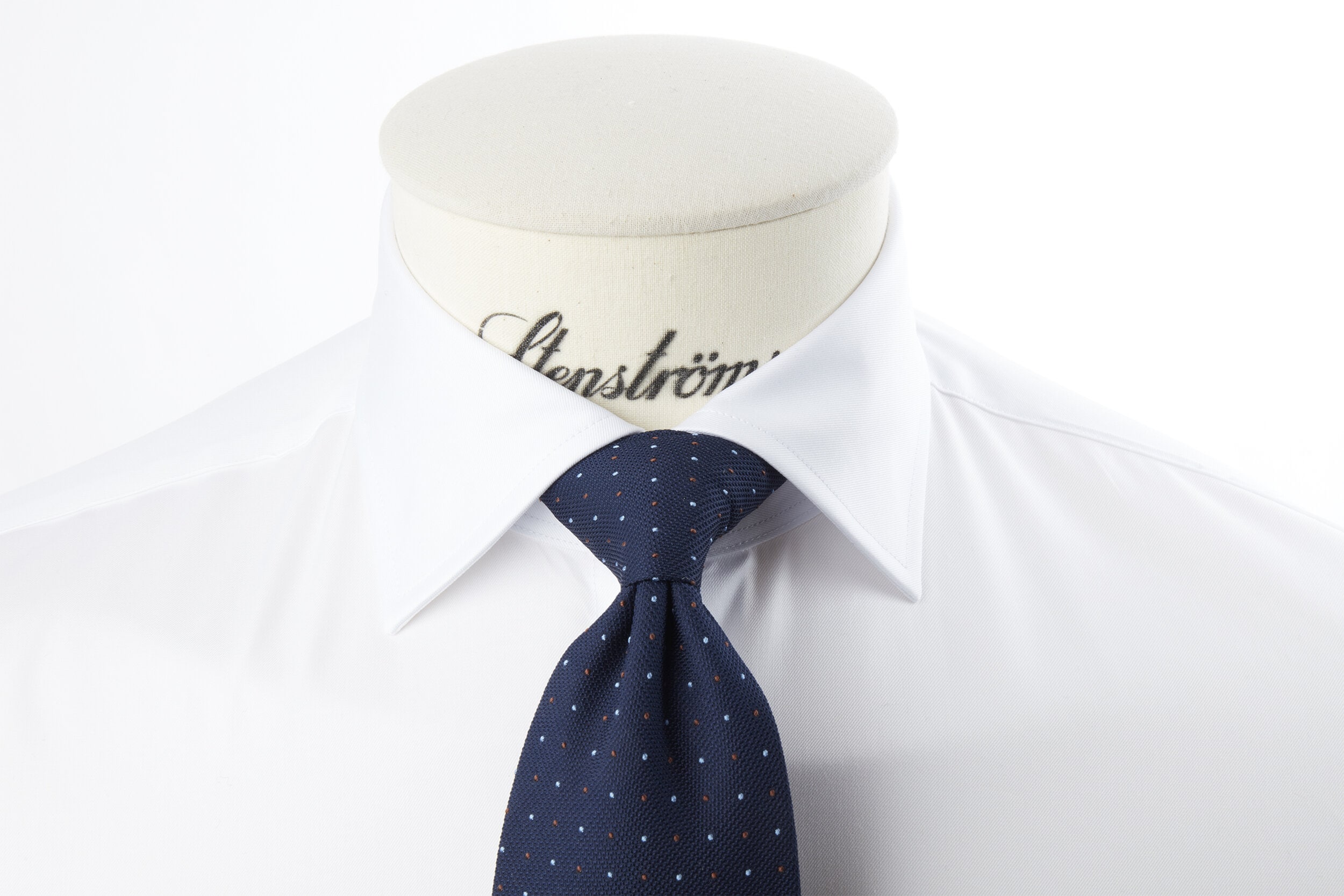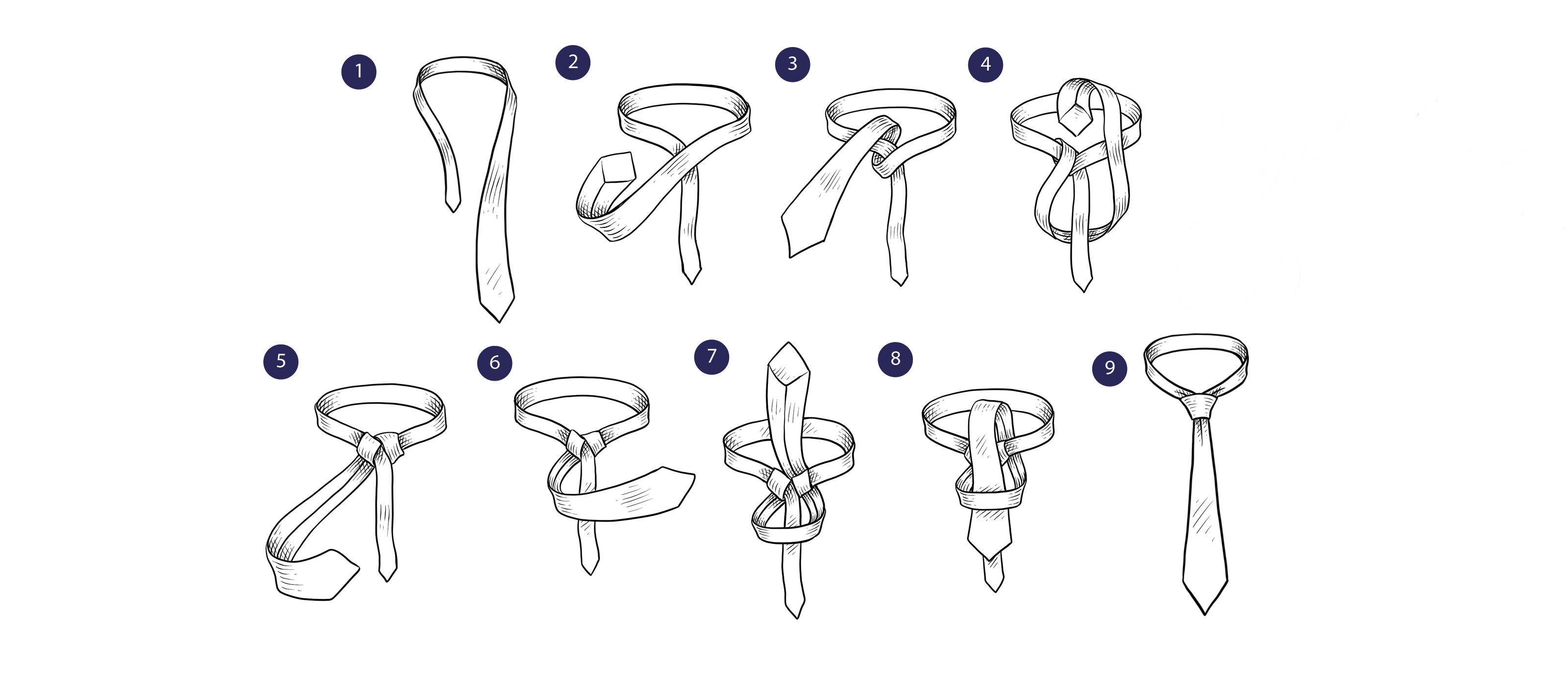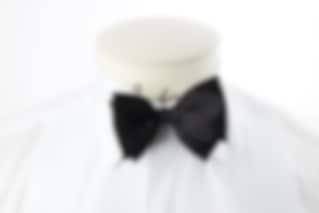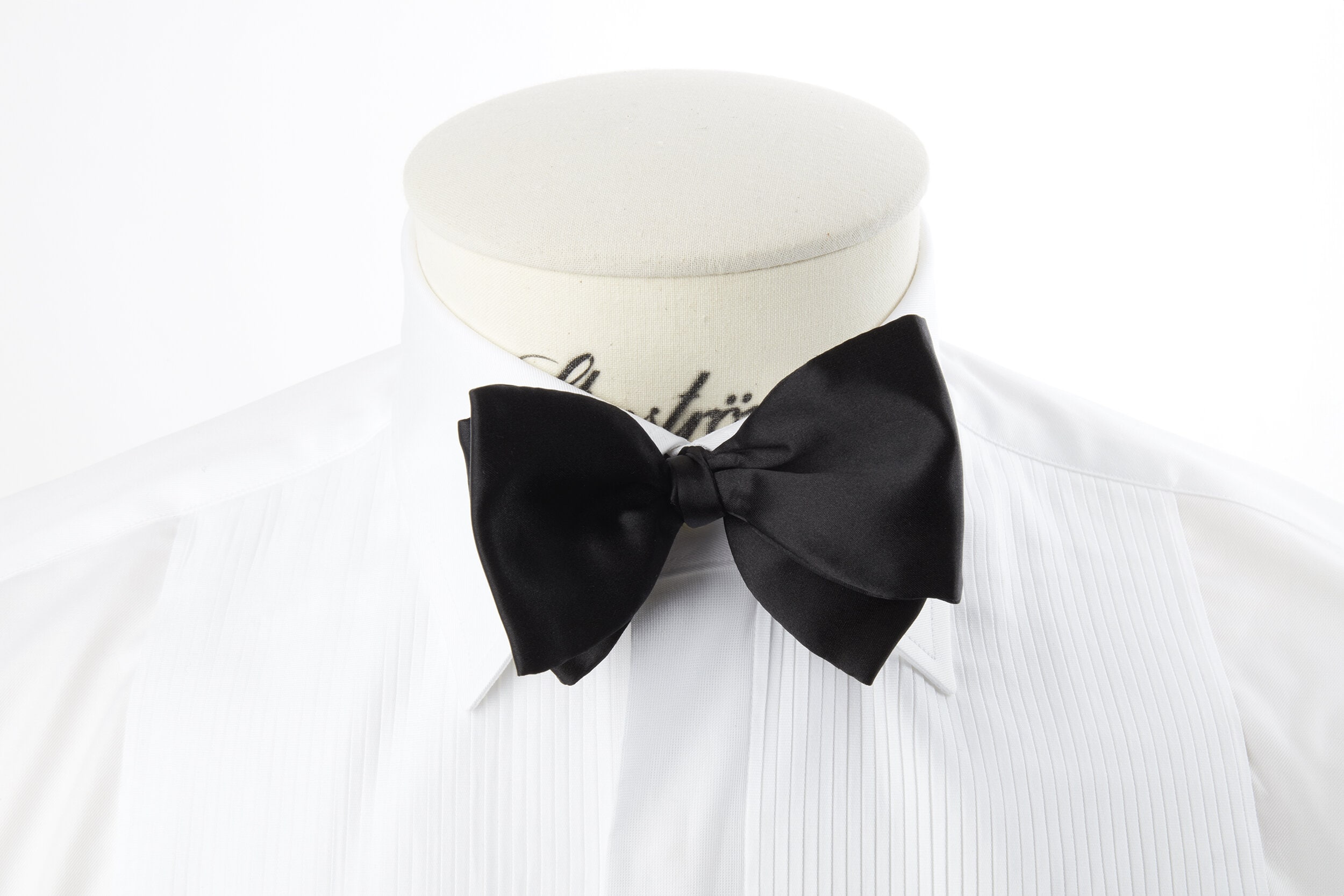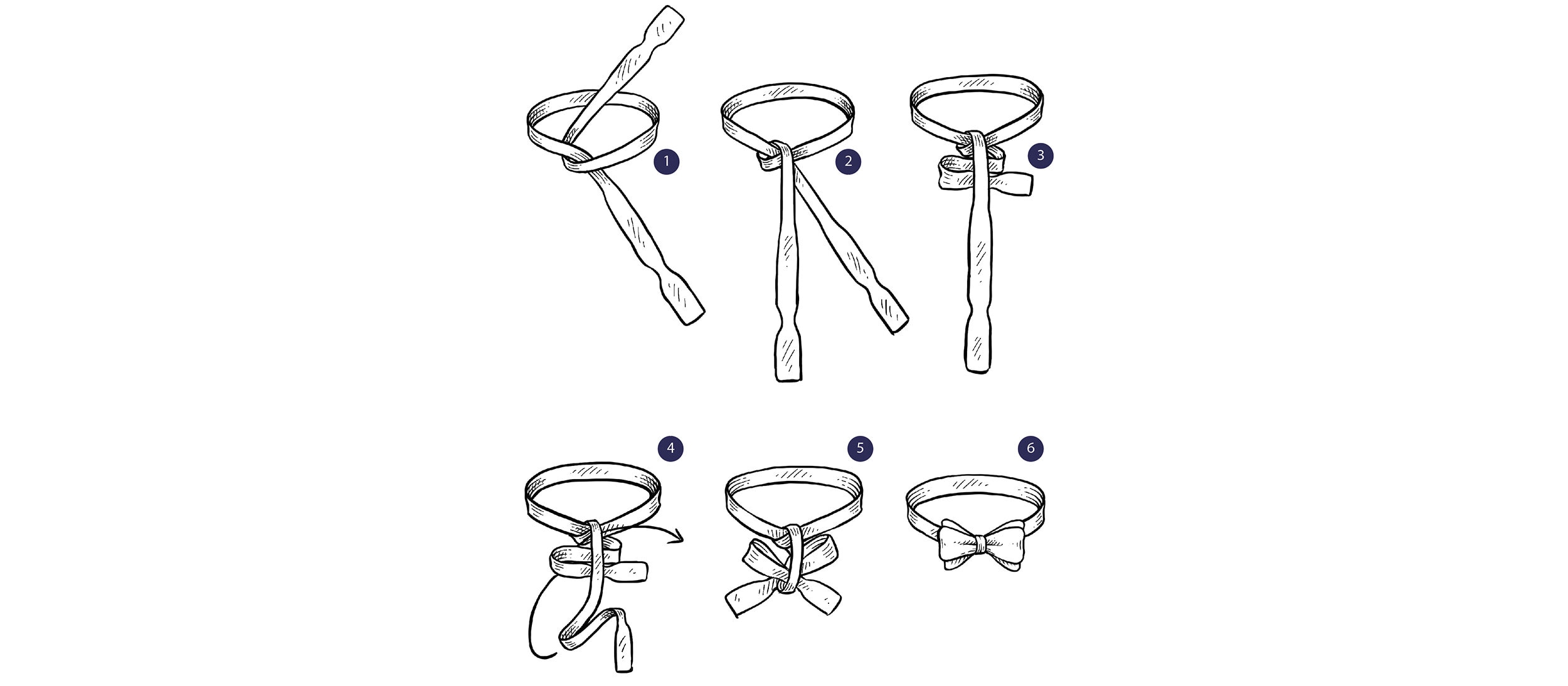Country & Language
Free shipping
Tie Guide
Tying the perfect knot can be a difficult task. Our tie-guides will take you step by step through the process.
Four-in-hand
This is the most common and classic tie knot. This is also the oldest known tie knot that we still use today, and it dates from the 1850s. The Four-in-hand knot has a long knot that gives the illusion of an extended neck. The slight obliqueness gives an asymmetrical peak between the knuckles.
The Four-in-hand is the most versatile tie knot, as it fits to all different collars, and it also works well on a thicker tie when you choose this knot.
Step by step Four-in-hand
Windsor
The Windsor knot has a thicker triangle than for example the Four in hand-knot. The Windsor knot works best with a cut away collar and is primarily suitable for a tie in silk.
The knot is not particularly common today, but back in the 1920s the Duke of Windsor (Edward VIII) used this knot a lot and there is a myth that he created the Windsor knot, but this is not true. However, he preferred to have a wider knot, and he used ties in a thicker quality, so his Four-in-hand knot looked thicker, hence the myth.
Step by step Windsor
Hand-Tied Bow Tie
The bow tie is a close relative of the tie, but in contrast to the tie you can see more clearly the predecessor, the scarf. Since 1870, the bow tie has barely changed at all, however, it has lost the status it once had. Before the 1870s, men's neck embellishments consisted of square cloths, which they folded together, and tied together in many creative ways. The fact that the bow tie has almost disappeared from the men's style is most likely due to the fact that most people don’t know how to tie a bow tie. Most often, you'll see someone wearing a bow tie with a tuxedo or at white-tie events. There are also already tied bow ties you can buy; however, it is not considered as stylish as the ones you tie yourself. Our guide will help you master the art of tying a bow tie.
Step by step Hand-Tied Bow Tie
The history of the tie
The ties origin is somewhat controversial, but it is believed that it originates from the garment Cravat, which was worn by Croatian and Ottoman soldiers in the 17th century. The French King Louis XIV saw these Cravats and became very fond of them, and began to wear them in colorful hues, and even his guards wore them. At this time France was the country to look at for fashion, so the Cravat trend naturally spread to England, where the accessory was developed and changed slightly. Some of the fine English gentlemen already wore neck embellishments, but the Cravat was seen as more elegant, and quickly became a favorite with the upper class in England.
During the 19th century, they began to use narrower and not as colorful neck accessories, and the larger and more colorful accessories came out of fashion. With the industrial revolution, the demand for more casual clothes became bigger, and then to have something to wear around the neck that was not as glamorous as the Cravat. It is said that the English club and school ties are close predecessors to today's ties.
It was during the 1880s that Oxford University ordered the first club ties, which quickly became a trend among other schools and clubs in England. However, it was later that the patterned tie saw the daylight, 1900 in Macclesfield. In the 1920s, Prince Edward was a great fashion icon and with him the tie quickly became popular. The prince preferred a more relaxed style, with a slightly looser knot, a style that even the middle class could embrace.
When the tie first came, it was mainly used for celebrations and festive occasions, but now it has developed to be used even for everyday use. During the industrial revolution, men used to wear ties each day when they worked in factories and fields. In 1924, in New York, Jesse Langsdorf patented the method used for making most ties and the same method is still used today.
During the same time several different grinding knots began to appear, the men wanted to experiment with their style. It was after the Second World War that it got fashionable with ties in color and patterns again, they wanted to show their identity and after many gray years they wanted to be uplifted.
The tie fell out of fashion when the 1950s came, with the strong youth culture where one would dress in t-shirts and leather jackets. With the band The Beatles, the tie became big again in the 60's. It disappeared again during the 70's when the hippie culture became popular, and then came the 80's and the tie made another come back.
In other words, it has been a roller coaster for the tie during the 20th century. Since the 80's the tie has been fairly steady in the fashion picture, with a small dip at the beginning of the century. The tie today is versatile, fitting seamlessly into various styles, whether it's for formal occasions or everyday wear, depending on your personal preferences.

